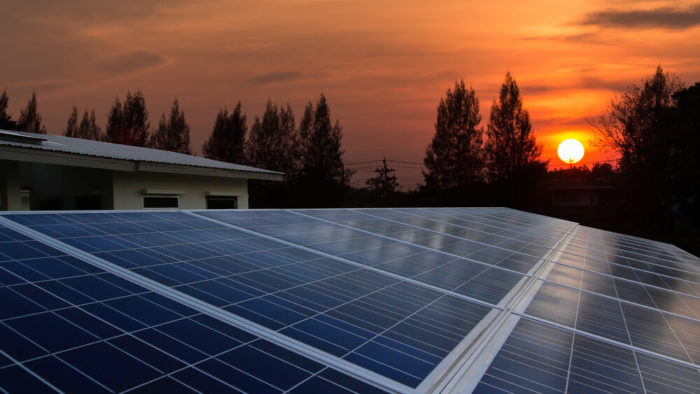

Rooftop solar is the fastest growing renewable energy sub-sector in India but installations must rapidly accelerate if the nation is to meet its ambitious renewable energy target of 175 gigawatts (GW) by 2022, a new report by the Institute for Energy Economics and Financial Analysis (IEEFA). Interestingly, the push for rooftops comes just when practically every research agency of note has given up on India’s chances of meeting its 175 GW target, despite the government stubbornly maintaining its stance that it will get there.
Vibhuti Garg, IEEFA energy analyst and co-author of the briefing note: Vast Potential of Rooftop Solar In India says India has installed 28 GW of solar capacity, a fourfold increase in less than three years. “Despite this strong growth, India has achieved only 10% of its 40 GW rooftop solar target. This is well below the run-rate anticipated by the government. To achieve the 2022 target, India will have to greatly accelerate the pace of new solar rooftop installations,” Garg said.
The report estimates that for the next three years, solar rooftop installations will grow at a compound annual growth rate of 50 percent, suggesting a cumulative 13 GW of installed capacity by FY2021-22.
[related_post]
Tim Buckley, co-author of the note and IEEFA’s director of energy finance studies says there are further steps the government can take to increase installations. “There has been significant investment in preparing the regulatory framework, upskilling the workforce for small scale deployments, and in educating the market,” Buckley said. “However, regulatory uncertainty is slowing the pace of rooftop solar installations. Policy certainty and more financial subsidies would also incentive the market, as would support for domestic manufacturing and simplifying the net metering application process.”
The report further stressed that shifting subsidies away from imported fossil fuels and reallocating to assist the capital cost of rooftop solar deployments is one way to fund the energy transition for marginalised households.
“At the moment around 70% of the market growth in the solar rooftop market is driven by commercial and industrial consumers suffering high tariffs,” Garg added. “Residential consumers and state governments are lagging behind. The government’s recent 20-40 percent financial subsidy for new residential rooftop solar installations should accelerate the pace at the local level.”
Solar is now cheaper than commercial and industrial grid tariffs in all major states in India, with average tariffs between Rs 6-11/kWh.
“The payback period is down to 3-4 years for commercial and industrial customers and will reduce further as equipment costs fall, coupled with the rise in retail tariffs,” Garg said. “This means these consumers can, over time, enjoy a financial gain when they shift to rooftop solar plus battery storage.”
The accelerated depreciation benefit allowing investors to claim 40% asset depreciation (reduced from 80% till 2016) in the first year of installation is an additional factor driving the commercial and industrial market.
“The states must continue to provide concessional exemptions including wheeling charges, the cross-subsidy surcharge and additional surcharges to ensure acceleration of installation across the country,” she added.
Rooftop solar is a win-win solution for both consumers and electricity distribution companies in India (discoms) while reducing India’s reliance on imported fossil fuels.
“India’s rooftop solar market holds huge growth potential and should be exploited to help meet the growing energy requirements of the population while enabling the government to reach its ambitious but achievable renewable energy target by 2022,” Buckley added. “It would make India a global leader in renewable energy installations, a badge to be proud of.”
At Iamrenew, we have consistently advocated rooftop solar for reasons above, and the fact that a strong rooftop solar push will do far more to drive awareness about the environmental compulsions of solar, than any amount of government announcements. For this, the government must move away from policy tweaks, and towards a simplified, faster process to enable net metering , for instance.
1. The mandate for blending Compressed Biogas (CBG) with natural gas has come into effect…
Andhra Pradesh is striving towards greening its energy sector with quite some speed. In a…
With an objective to bolster India’s green energy goals, a Tripartite Agreement has been signed…
The Union MNRE Minister Pralhad Joshi launched the Green Hydrogen Certification Scheme of India (GHCI)…
India’s energy conglomerate Bharat Petroleum Corporation Limited (BPCL) has commissioned a 5MW green hydrogen plant…
In a historical development, the European Space Agency (ESA) has successfully launched its pioneering ‘Biomass’…